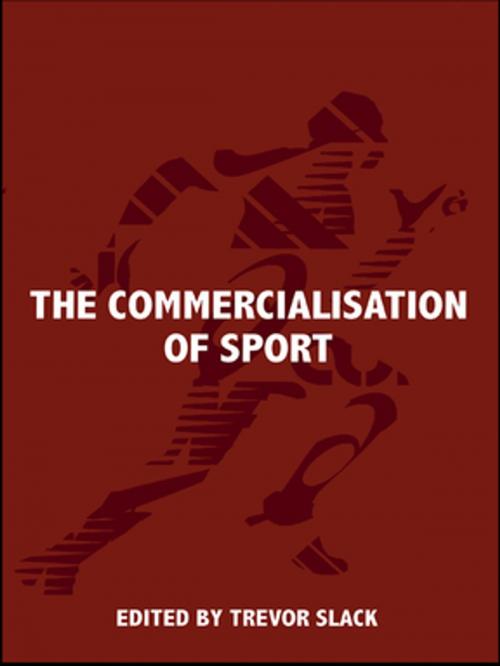| Author: | ISBN: | 9781135764340 | |
| Publisher: | Taylor and Francis | Publication: | March 1, 2004 |
| Imprint: | Routledge | Language: | English |
| Author: | |
| ISBN: | 9781135764340 |
| Publisher: | Taylor and Francis |
| Publication: | March 1, 2004 |
| Imprint: | Routledge |
| Language: | English |
What does commercialisation mean for the future of sport?
Modern sports links to commerce are highly visible. Stadiums and arenas bear the names of businesses, while sponsors' logos appear on athletes' clothing and equipment, on the facilities in which they play, and in the titles of the events in which they compete. Media companies pay vast sums for the rights to broadcast sports events, and advertisers pay a premium to promote products during the screening of these events. Cities invest, at the expense of other social projects, in the staging of major sports events and to attract professional teams to their areas. Star athletes are transferred for multi-million fees and professional sport franchises are sold for sums higher than the gross domestic products of some countries. Even recreational athletes are subject to a constant barrage of commercial pressures to improve their game.
Sport's links to commerce have intensified over the past 30 years but have been subjected to little academic analysis. This book represents an attempt to fill that significant gap in the literature by examining five different aspects of the commercialisation of sport:
· The sports industry
· The public sector
· The commercialisation of 'amateur' sport
· Sport and television
· Sports sponsorship
There has been a rapid and widespread commercialisation of sport and it is vital that we now raise critical questions and analyse the changes that have taken place.
What does commercialisation mean for the future of sport?
Modern sports links to commerce are highly visible. Stadiums and arenas bear the names of businesses, while sponsors' logos appear on athletes' clothing and equipment, on the facilities in which they play, and in the titles of the events in which they compete. Media companies pay vast sums for the rights to broadcast sports events, and advertisers pay a premium to promote products during the screening of these events. Cities invest, at the expense of other social projects, in the staging of major sports events and to attract professional teams to their areas. Star athletes are transferred for multi-million fees and professional sport franchises are sold for sums higher than the gross domestic products of some countries. Even recreational athletes are subject to a constant barrage of commercial pressures to improve their game.
Sport's links to commerce have intensified over the past 30 years but have been subjected to little academic analysis. This book represents an attempt to fill that significant gap in the literature by examining five different aspects of the commercialisation of sport:
· The sports industry
· The public sector
· The commercialisation of 'amateur' sport
· Sport and television
· Sports sponsorship
There has been a rapid and widespread commercialisation of sport and it is vital that we now raise critical questions and analyse the changes that have taken place.















